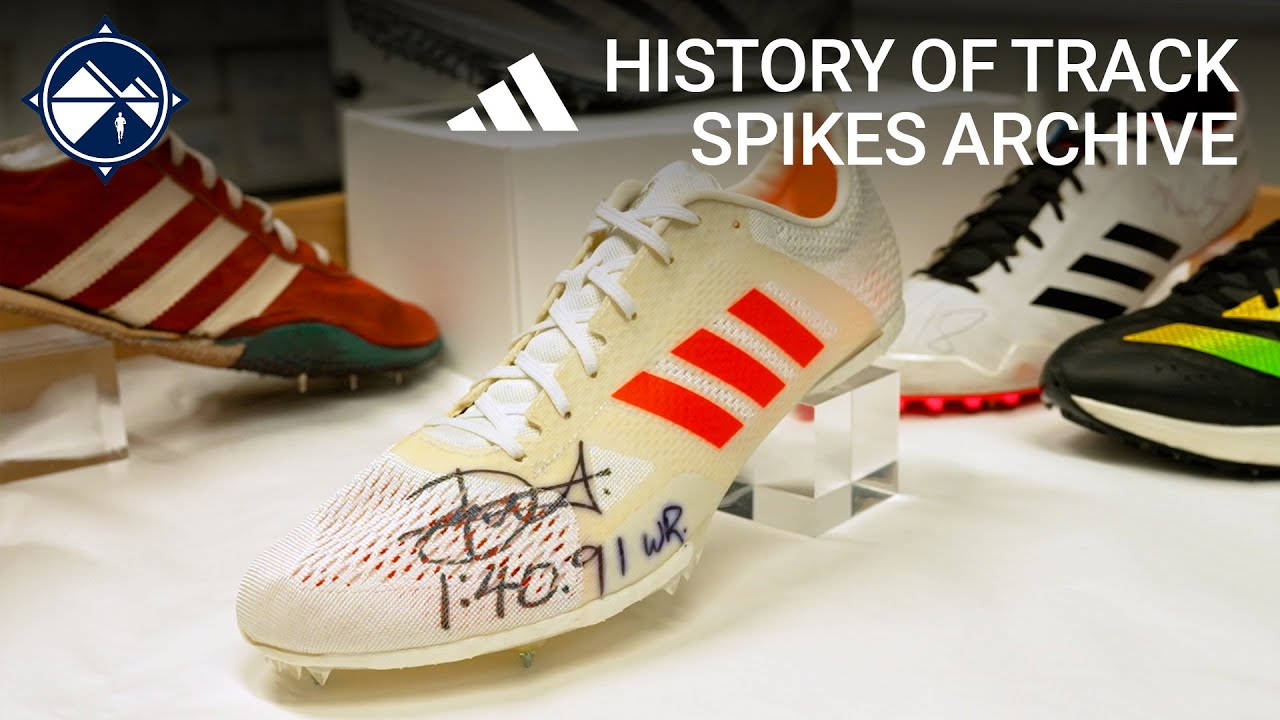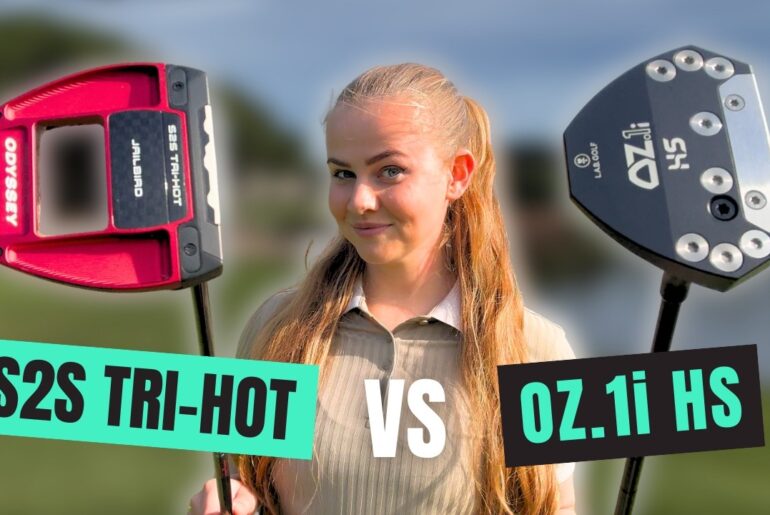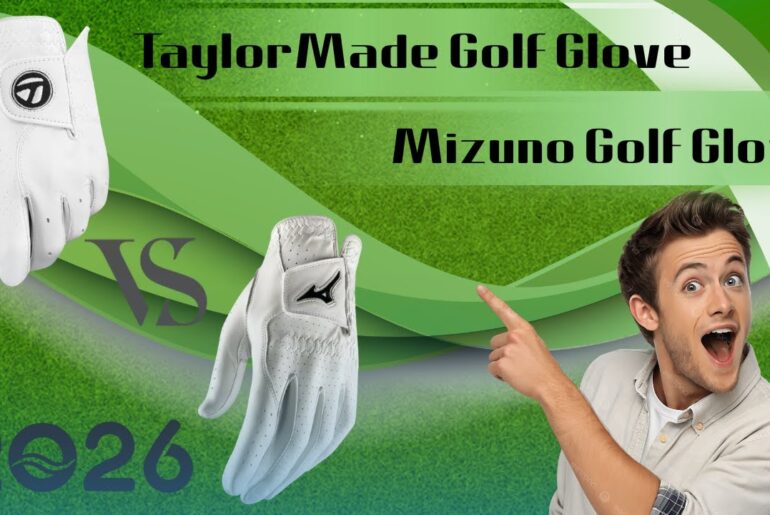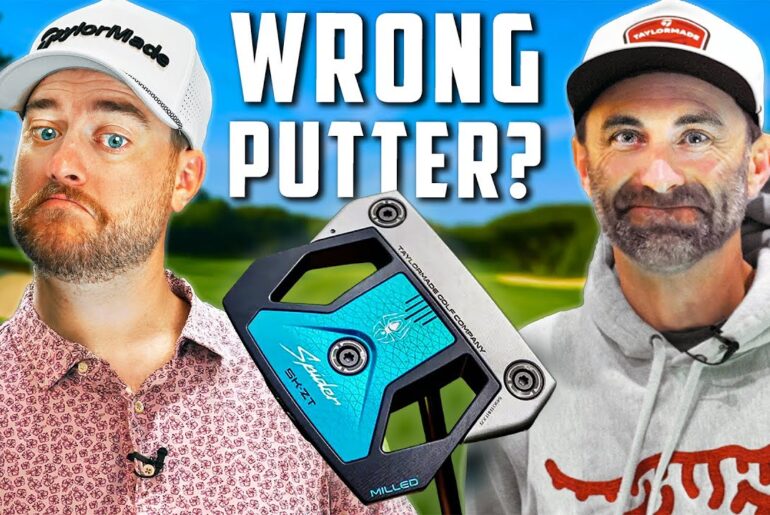From 1925 to current day, adidas has always been on the forefront of creating the fastest spikes for the fastest athletes. From their very first track spike (adidas F1) to their current fastest sprint spike (adidas prime sp 4), adidas continues to innovate and build spikes that help their athletes like Noah Lyles compete against the best.
Shop Men’s adidas Footwear: https://www.runningwarehouse.com/adidas_Mens_adizero_Running_Shoe_Line/catpage-ADIZEROMF.html?from=youtube
Shop Women’s adidas Footwear: https://www.runningwarehouse.com/adidas_Womens_adizero_Running_Shoe_Line/catpage-ADIZEROWF.html?from=youtube
Shop adidas Track Spikes: https://www.runningwarehouse.com/catpage-MRSADTF.html?from=youtube
Shop Men’s adidas Running Shoes: https://www.runningwarehouse.com/adidas_Mens_Running_Shoes/catpage-MRSADIDAS.html?from=youtube
Shop Women’s adidas Running Shoes: https://www.runningwarehouse.com/adidas_Womens_Running_Shoes/catpage-WRSADIDAS.html?from=youtube
Shop All Men’s Footwear: https://www.runningwarehouse.com/mens-running-shoes.html?from=youtube
Shop All Women’s Footwear: https://www.runningwarehouse.com/womens-running-shoes.html?from=youtube
➤YouTube: https://www.youtube.com/user/runningwarehouse
➤ Facebook: https://www.facebook.com/runningwarehouse
➤ Instagram: https://www.instagram.com/runningwarehouse/
➤ Tiktok: https://www.tiktok.com/@runningwarehouse
Shop Running Warehouse EU: https://www.runningwarehouse.eu
➤RW Europe YouTube: https://www.youtube.com/channel/UC9NQsFCvmZ__8hDvewjA2SQ
Shop Running Warehouse AU: https://www.runningwarehouse.com.au/
➤RW Australia YouTube: https://www.youtube.com/@runningwarehouseaustralia9838
The History Of adidas Track Spikes | Best adidas track Spikes and Best adidas running shoes
[Music] How’s it going, guys? I’m Connor from Running Warehouse, and today I’m here with Sam from Adidas. Today, we are going to be taking a look at some of the most historic track spikes in the history of the sport. If we go back over the past hundred years, Adidas has had some of the greatest sprinters of all time. And Sam, you know, I don’t even know where to start today. What’s the first shoe we have on deck? Yeah, we have a lot of shoes to go through today. Um, the history really begins about a hundred years ago, so that’s where we’re going to start. Um, one of the key things about working in Adidas is the plethora of shoes we have and the inspiration we take from the deepest archive in the industry. So, today I want to start with a special one. This is F1. That’s how we label things here. Footwear one, footwear. I think it’s like up to 3,000 now or something beyond that. So, this is the first Spike that we have in physical form. This was from 1925. This shoe went on to win the gold medal in the women’s 800 in 28 in Amsterdam. That was Lena Radka. And this is, yeah, truly just an iconic piece of history. And when you take a look at this spike, there is nothing to it. There is no midsole. We’ve got these extremely long spikes. Definitely quite a different look than the spikes we see today. Yeah, totally. It is a different look, but there’s also a lot of things that still kind of ru whether it’s the heel counter or like you said the plate in the forefoot with the spikes. I mean, these spikes were made for cinder tracks and gravel tracks. So, yeah, they had to be long to get some traction. So, Sam, this is a true vintage spike, but let’s fast forward a few years. What do we have next? Yeah, absolutely. So a great transition is also an 800 meter spike. From 28 the IAAF or the ruling body at that time basically said that women shouldn’t be running the 800 m. So it was actually banned from the Olympics until uh Rome. The next following Olympics was Tokyo 64. This spike was worn by Annne Packer. Uh she went on to win gold that year in this spike and break the women’s uh 800 meter world record. One really cool quote I saw because Anne Packer was a 10020 meter runner. One quote I saw, she didn’t know what she was doing. She was like, “I was so naive to the race that I had no limits to myself. I had no expectation of what I should or shouldn’t do. So, I just went out and ran and she broke the world record.” Wow. So, really cool story for for 1964. Yeah. And looking at the shoe again, it’s getting a little bit more modern than the leather we saw before. Now, we’ve been upgraded to the suede. You know, I’m sure this was uh quite a different feel than the modern spikes we have today. Mhm. One thing I’ll note on the on the design here is you have this amazing heel construction. This is kind of the first time that we see the Audi Zero Sling launch, which we have today on almost all of our models. So, it’s really that first perfect heel fitting construction all the way back in ‘ 64. Yeah. So from 64, we’re going to move on to the 80s. And we’ve got another suede upper spike that shares some similarities with this shoe. What do we have? Yeah, absolutely. This one is another icon. I mean, we’re going to go icon after icon. Edwin Moses, one of the best hurdlers of all time. This Spike was 84. Edwin Moses has too many accolades to even count, right? But he really was one of the first guys that brought the swagger to track and field. I mean, those old gold chains, the watches, I mean, that guy really had it going. Yeah. You know, Edwin Moses really was an inspiration for a lot of runners at the time. And taking a little closer look at this particular spike. We talked about the similarities, but I think some of the changes can actually be seen on the outsole. We have a little bit more modern spike, some rubber. Can you talk about uh how the traction story is starting to change here? Yeah, absolutely. I mean, the track surface is evolving over time as well, right? Like back then it was all cinder tracks and it was a lot more of that loose material. But now we’re getting into that modern era uh of track and field. So the traction had to change. And also we see a lot of this micro traction as well. Micro traction became a big thing to aid in traction not just coming from the spikes but across the whole bottom. And you’ll see a lot of similarities in this design kind of in future models too. So a little bit of sneak peek for the next couple. Yeah. And one other call out with this spike is we’re starting to see just a little bit of cushioning from those early days of absolutely no cushioning. We’re starting to see a little bit, but that really does continue to evolve over the years. I don’t think anyone ever could see the foam technology we’d get to today. But from 80s, where are we going next? From the 80s, uh, we go up to the early ’90s, ’92, we have the EQT Racer LD. So, this was a longdistance spike. Um, but it’s just a really cool shout to the era of Adios running when we were purely making athletics equipment. And that’s what EQT stood for, right? Equipment. So, we were making equipment for athletes. And that’s really what it boiled down to. And that’s the same ethos that we look back to the original audits of only the best for the athletes. And I think that this is maybe one of the most iconic visuals we have in the archive. If you’re paying attention to AIOS running now, we released the Boston 13 in this really cool colorway, white with teal stripes, calling back to that kind of iconic EQT. So, basically, we the design team took the inspiration from the archive, right? We came down here and we looked through the archive to find inspiration into into the color world to get that story of the EQT. But another kind of archive find was not in your typical fashion. This archive came from our storage basement. So, not this archive that we are in today. Um, I was down there with a developer on our team and I saw a box that just said history on it and I was like, “No way. What’s in here?” First thing I noticed, Jeremy Warner 2008, the Lone Star Spike that he wore in Beijing Olympics and this was just laying around in a basement rotting away. So, as of today, we’re donating it back to the archive to get it, you know, properly taken care of in here. And this is an interesting spike because when you look at it, there’s little hits of Jer Jeremy Warner, uh, his name written on the side, his logo, even that Texas call out. This truly was a custom spike. Was this a one of one? This was a oneonone. I mean, this was the era when we we didn’t have as much regulation on track and field footwear and racing footwear, so we could make custom spikes for athletes. Um, so yeah, this was a 101. And then you look at the construction of it, it has a lot more of these uh synthetic overlays. You’re getting this really shiny uh synthetic material and a lot of that micro texture, a lot of the new plate material. And if you look really closely, you have this same hexagonal shape that we saw earlier on the Edwin Moses spike. So really bringing in those layers of design language all the way back from the 80s and earlier. Yeah. I mean, a lot of that technology, a lot of that learning continues to build year after year. And just seeing this extremely bright colorway, it makes sense. Jeremy Warner liked to make a statement. And this is a very, very cool spike. But again, we talk about progression. The spikes continue to get better, faster, lighter, even a little bit more stack. What do we have next? Yeah. We have next is the MD from another legend, probably the greatest of all time, 800 meter runner, David Rodisha. This is a super cool spike cuz it’s one of the first spikes to have boost in it as well. So, a technology that we introduced in the early 201s now on track spikes. And Rudisha probably the greatest 800 meter runner and maybe one of the greatest track and field records of all time. I don’t know if that record will ever go down. And this spike definitely had to have played a key role with that little bit of a technology boost with boost. Yeah, with boost, right? Yep. Absolutely. And like you said, the foam compounds that were used in the early days, you couldn’t add a lot because it would add weight. Um, so now that we have a technology like Boost, we’re able to start incorporating more and more foam to absorb that impact and to give that energy return. Um, so it’s really a turning of the tide right here in in racing footwear. Now, Rudisha spike known for that boost technology, for that little bit of a extra responsiveness, but it’s not always about responsiveness. Sometimes it’s about building the lightest bike possible. And I think that’s pretty clear with the next bike. What do we have? Yeah, absolutely. It’s all about pulling different levers for different athletes and what we want to achieve. When we go to the sprint spikes, we have the original Prime SP from 2019. At the time, this was the lightest spike we had ever made through Adidas. This was Noah Lyall’s custommade spike. You can see the the red, white, and blue underneath the the collar there. And this was his first two gold medals, which is, you know, looking back now, really the catalyst for him being such a dominant champion. And so we had on the side here 200 and 4x 100 meter uh to signify those records. Yeah, you know, this was almost the start of Noah Lyall’s just progression to fame to records and uh you know, again, we talk about lightweight, feeling this spike. It really is one of the lightest sprint spikes I’ve ever felt, but then again, years go on, we talk about that technology progressing and we see light strike pro really just an amazing innovation. And we saw it in distance bikes, but then we started to realize some of that application could be used in the sprint spikes as well. What did that lead to? Yeah. And it’s all about tuning that technology. So jumping from one technology to the next. And then we realize in the distance world how much of a benefit we can get from Light Strike Pro. How do we tweak that and put that into a sprint bike? So the next one is Eugene World Championships 2022. also Noah Liles with the custom red, white, and blue on the inside collar. Um, and this was his world championship medal. So, uh, going from 2019 to 2022, we see quite a big difference in technology. Yeah. And you know, even when we go back to the early days in 1925, when you look at the difference between stack, quite a difference. And that extra cushioning, that extra bounce is really what’s helping set these new records and uh really start a new era of uh of sprinting. Yeah, absolutely. And with that, it’s also the geometries and studying the athletes feet and their biomechanics throughout the 10-second sprint. How they transfer power from the blocks all the way to the last few meters is wildly different. So learning from Noah over time starting in 2019 22 going into the Paris spike we’ve learned a lot about our pro sprinters and what they need. So this model here is the Prime SP3 Strong. So it’s really just a new silhouette, new upper to the Prime SP2 with a few modifications underfoot to give it a little bit more durability and a little bit more springiness in each step. Yeah, you know, it’s crazy to see the technology continue forward that Light Strike Pro is proven. It’s built for the bounciness and really one of the big changes with this version is the upper and really just built to kind of keep your foot at one with the foot. And I also noticed this little Y3 call out. What is that all about? Yeah, so Y3 is a internal brand. It’s a fashionoriented brand out of Japan. And what we wanted to do was bring kind of the fashion show, the runway feel to the runway of Paris 2024. So usually we customize our spikes given the Noah Liles. we have the American flag wrapped around it. Um, or if you’re any of other icon athletes, you get those customizations. So, for our icon athletes for Paris, we did the Y3 collaboration. So, that’s why we have the co-branded upper um with the strong material to really tell that full story of showcasing our best athletes. Well, Sam, it’s so wild to see the early days of Adidas track bikes with no midsole, leather upper, all the way to the latest and greatest with strong uppers, Light Strike Pro, really the fastest bikes built for the fastest athletes, built to set records. But my final question is, how do we go further? How do we push those limits and continue to make faster and faster spikes? What’s next? Absolutely. Well, we’re really happy to be able to share the next evolution of the Prime SP. We just went through the latest three versions and we have the Prime SP 4 with us. But a little bit of background to it is we spent months, weeks, hours diving in with Coach Lance and Noah and the team that supports uh down in Florida. So, we spent a lot of time with them down in Florida to understand what they need and what is that next evolution in sprint bikes. So, without further ado, we have the SP4 in the really cool retro call back to the Jeremy Warner spike. We call it the silver bullet. And yeah. Well, Sam, this was the spike I was waiting for. All new from top to bottom. This is really a revolutionary design. Can you give us the quick overview of how this shoe is all new and how it’s going to continue to evolve from already some of the fastest spikes we’ve seen? Yeah, sweet. So, this model is totally new. The really fun part about it is the midsole. We have even more Light Strike Pro tuned specifically for the power that the athletes are putting into the to the ground. I just got a quote from Noah this morning who’s been testing the shoe. He thinks it’s one of the best spikes that Adidas has ever made. Wow. So, it only makes sense that the fastest spike in the world goes to the fastest man in the world, Noah Li. We’ve seen all this history with all these spikes in front of us, but I really feel like this spike is going to be in the archives real soon as a a new piece of history. Thank you, Sam, for guiding us through and uh showing us what the archive is all about. Yeah. No, thank you. We appreciate the time to go through the archive because we have such a rich history and we continue to build the next evolution of everything that is the foundation here today. So, yeah, it’s been a pleasure. [Music]








2 Comments
Would love to see the same for all addidas marathon shoes from the earliest eras
This video is super cool